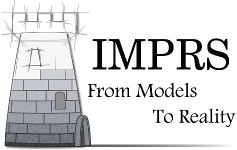Speaker
Description
Nanoporous gold has emerged as a promising, highly selective catalyst material for a variety of partial oxidation reactions at low temperatures. Structural aspects and admixtures with other metals, for example copper and silver have been investigated to gain insight in the catalytic properties of this material system. Single crystal surfaces, studied under ultra-high vacuum conditions, can serve as model systems, which allow to investigate a variety of surface properties including reaction kinetics on a molecular level under well-defined conditions.
Employing pulsed molecular beam techniques, combined with in-situ IR spectroscopy and mass spectrometry, we have investigated the kinetics of oxidation reactions on the stepped Au(332) surface. Since molecular oxygen does not dissociate on Au surfaces under UHV conditions, atomic oxygen was provided by a thermal cracker, operated as an effusive beam source. The oxidation of carbon monoxide has been studied as an initial test reaction. Beside the nature of the adsorption sites on the Au(332) surface, the reaction kinetics of the gold surface was investigated in dependence of various parameters, e.g. temperature and oxygen partial pressure. In particular, the influence of water on the activity of the gold catalyst was tested, showing that water can prevent the deactivation of the system, which is in line with results found for the np-Au catalyst. In addition, oxidative coupling of methanol was studied under isothermal conditions. The pulsed molecular beam approach provides access to transient as well as steady state kinetics, which can be studied as a function of various parameters such as temperature or educt flux and can be combined with in-situ IR spectroscopic data, to elucidate the nature of possible surface species. These results will be discussed in terms of activity and selectivity of the reaction and compared to the results on nanoporous gold.

